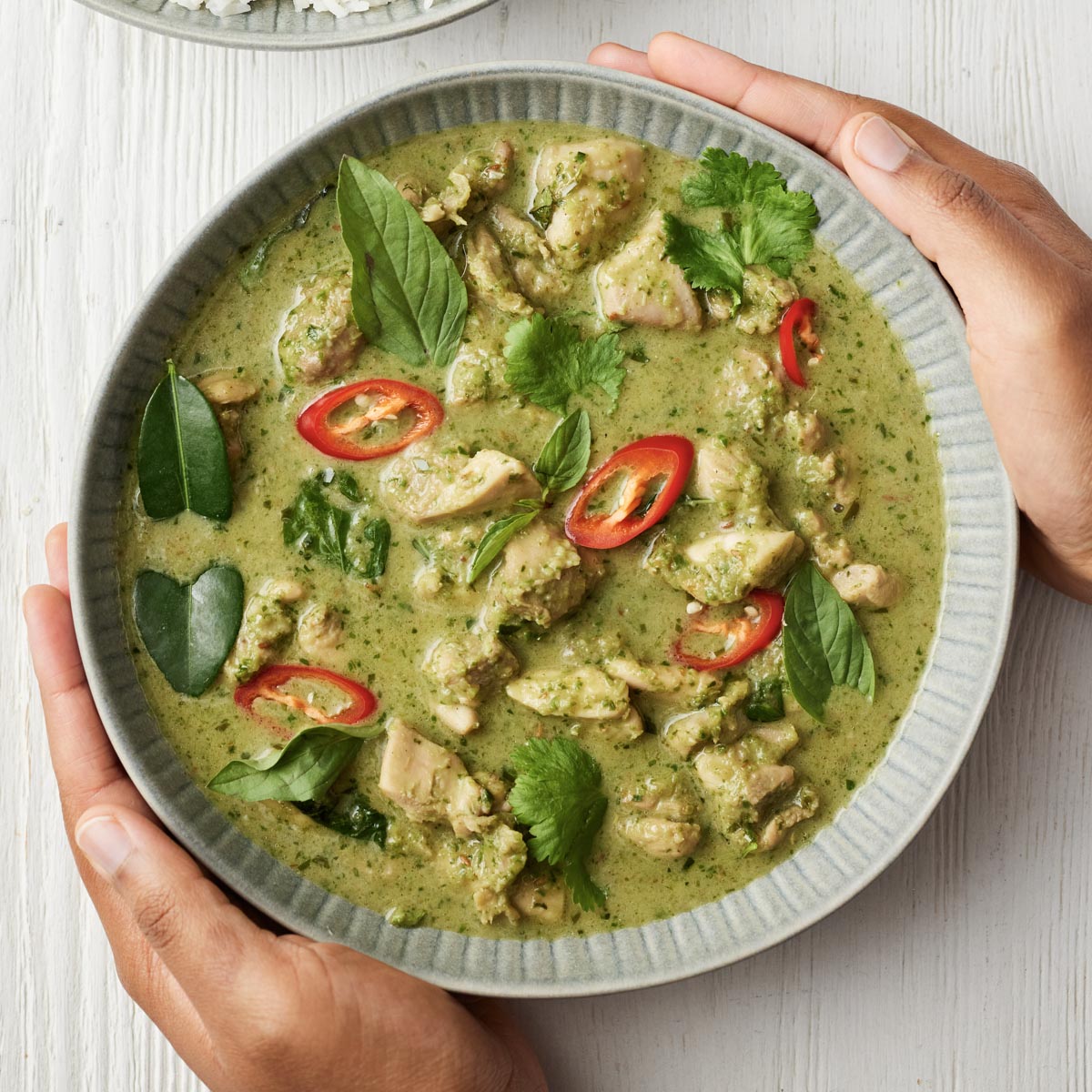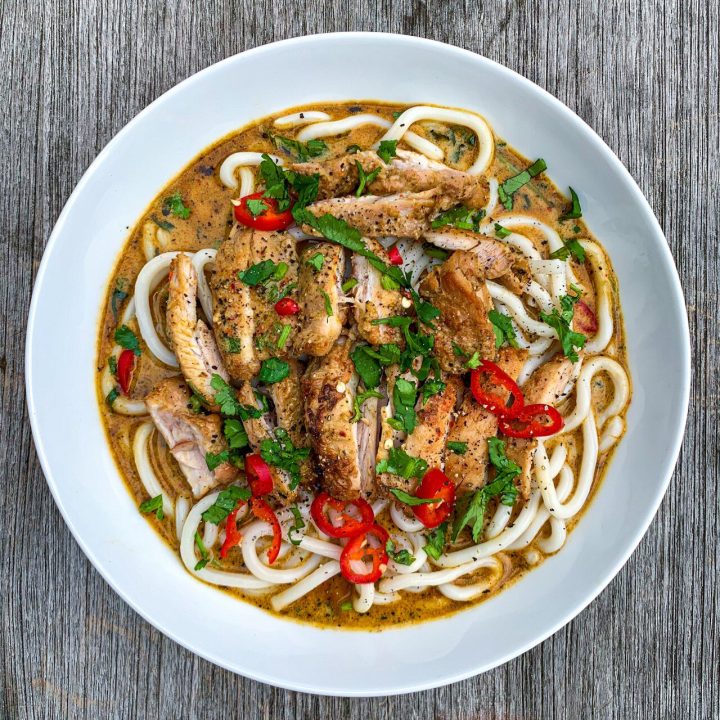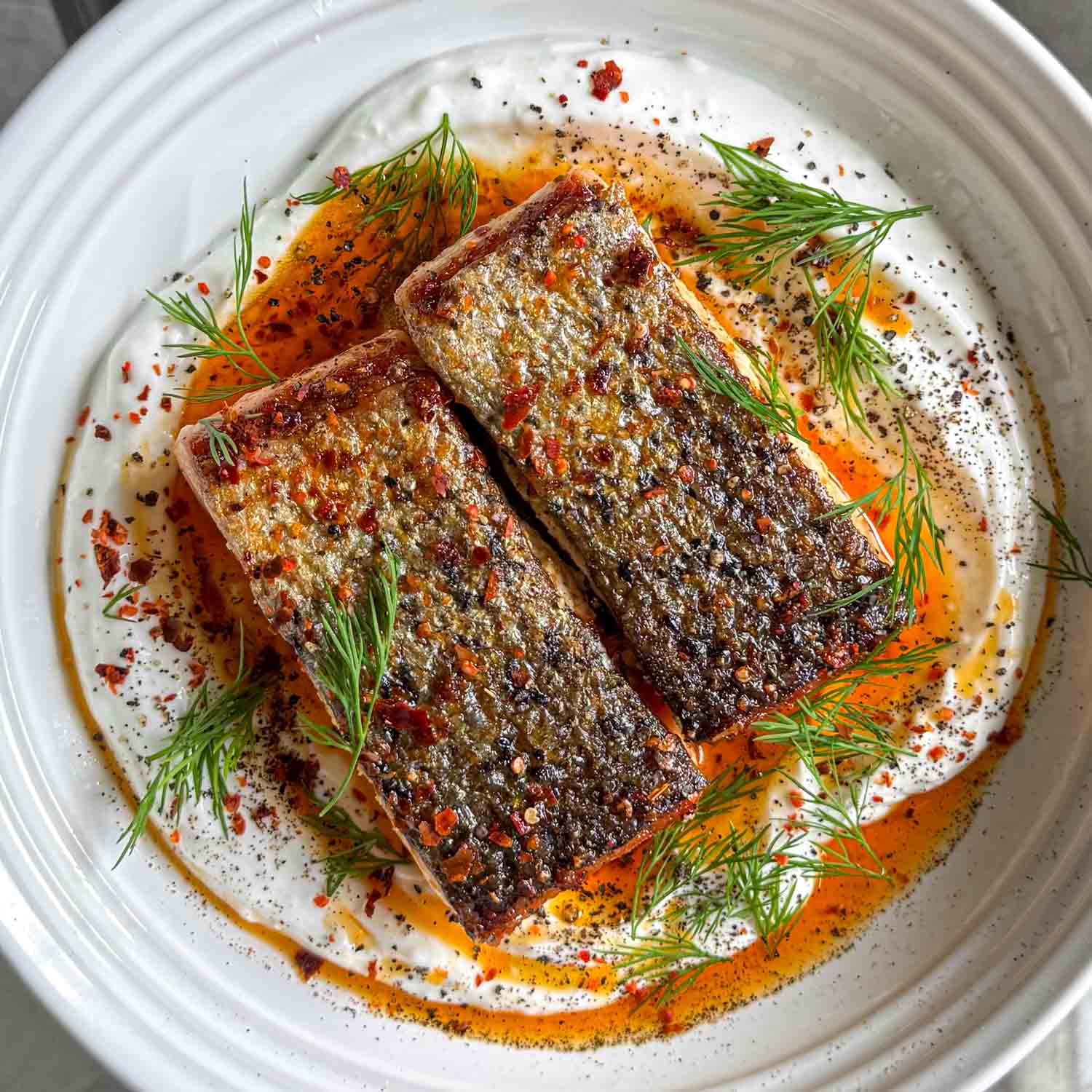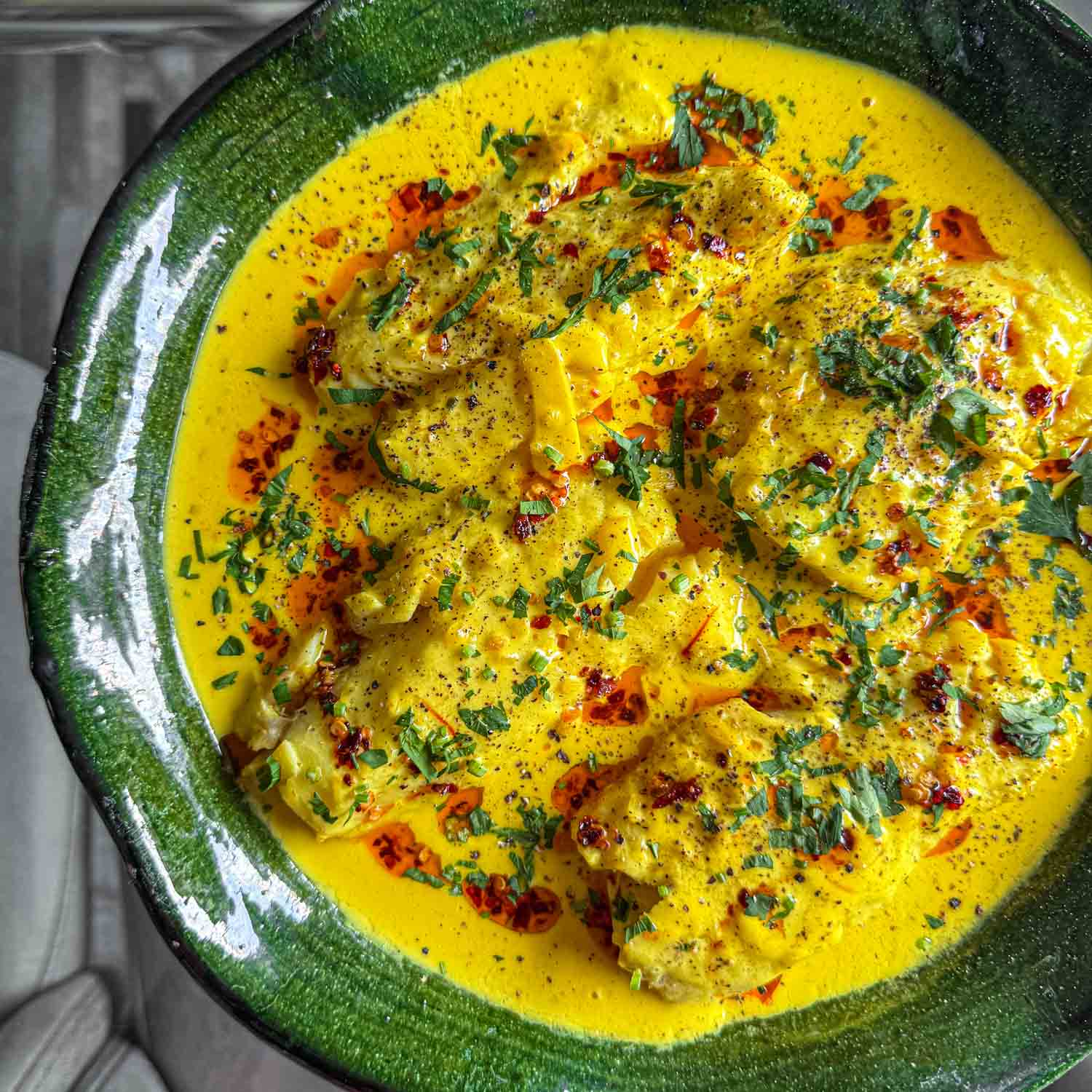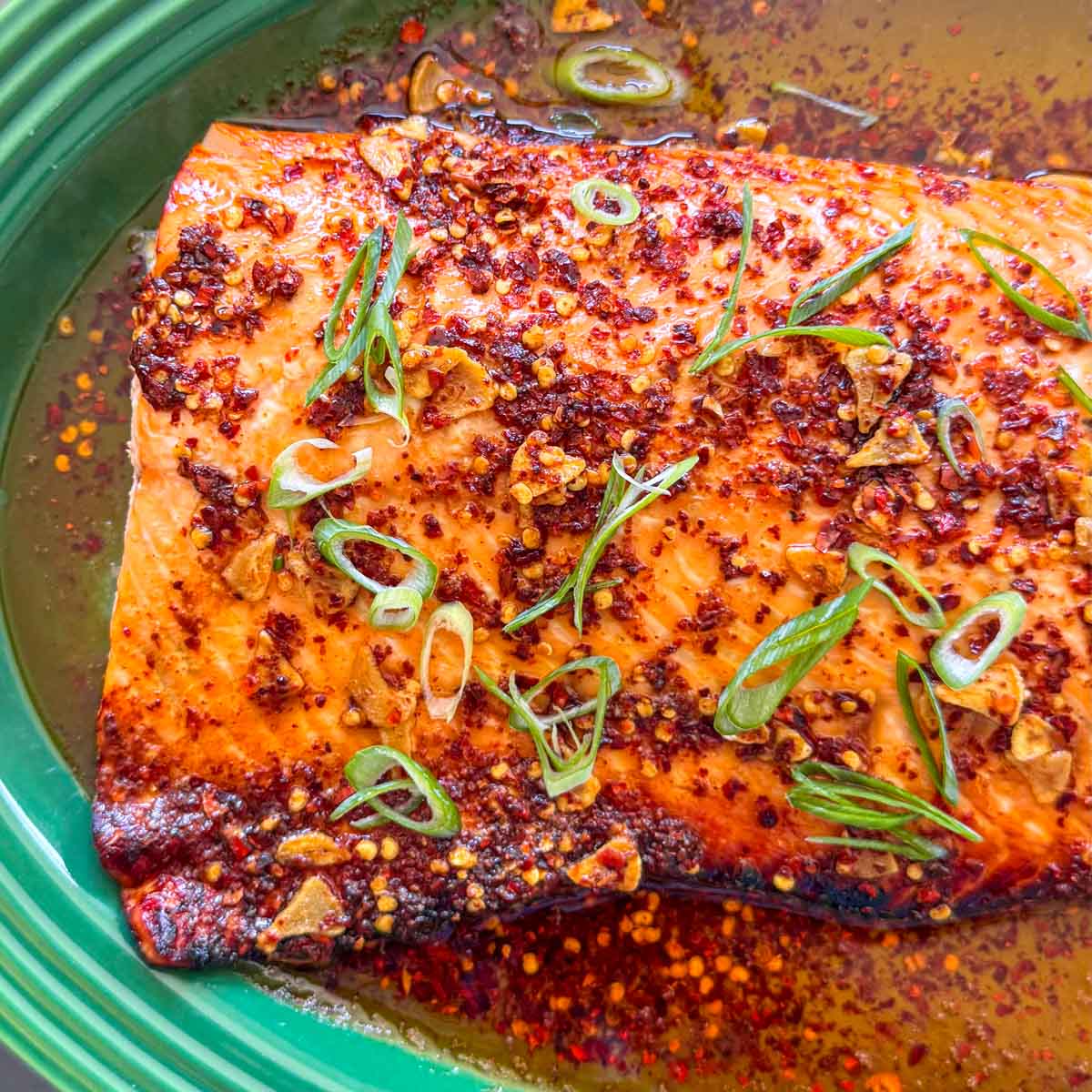Who doesn’t love a rich, aromatic Thai Green Chicken Curry? This vibrant dish is a perfect balance of spice, sweetness, and umami, delivering an explosion of flavour in every bite.
While many rely on store-bought pastes, making your own transforms the dish into something truly special. Packed with fresh herbs, creamy coconut, and fiery chillies, this homemade version is an absolute must-try.
See me make this recipe here!
Table of Contents
- Ingredient Breakdown
- Crafting the Perfect Curry Paste
- Homemade Over Store-Bought
- Why Coconut Cream is Crucial
- The Role of Fresh Herbs and Spices
- Adjusting the Heat Level
- How to Customise Your Curry
- More Thai Curry Inspired Recipes
Ingredient Breakdown
- Green bird’s eye chillies: Provide the signature heat and vibrant green colour.
- Garlic: Adds depth and a savoury foundation to the curry paste.
- Echalion shallot: Milder and sweeter than regular onions, it enhances the paste’s complexity.
- Galangal root: A key ingredient in Thai cuisine, offering a peppery and slightly citrusy flavour.
- Lemongrass: Infuses the paste with a bright, citrusy aroma that complements the other flavours.
- Kaffir lime leaves: Their distinct fragrance adds a fresh, floral note to both the paste and curry.
- Coriander seeds: Bring a toasty, earthy warmth that enhances the dish’s depth.
- Cumin seeds: Lend a warm, nutty flavour that pairs well with the other spices.
- Ground white pepper: Adds subtle heat and a hint of sharpness to balance the richness.
- Sea salt: Enhances all the natural flavours without overpowering them.
- Shrimp paste: A powerful umami booster that adds depth and authenticity to the paste.
- Coconut cream: Creates a creamy, slightly sweet base that tempers the spice and adds richness.
- Chicken thigh fillets: Tender and juicy, they absorb the curry’s bold flavours beautifully.
- Chicken stock: A savoury liquid that helps blend all the ingredients into a cohesive dish.
- Fish sauce: A quintessential Thai ingredient that brings saltiness and deep umami flavour.
- Palm sugar: Balances the spice with a touch of gentle caramel sweetness.
- Thai basil leaves: Provide a fresh, slightly aniseed-like finish that elevates the dish.
Crafting the Perfect Curry Paste
The key to a great Thai Green Chicken Curry lies in the paste. While it takes some effort, the rewards are undeniable. Start by prepping all the ingredients. Mise en place (the preparation of dishes and ingredients) is essential for a smooth process. Blitz everything except the shrimp paste in a food processor until finely chopped. This ensures a shorter pounding time, which is crucial for achieving the right consistency.
Now, it’s time for the mortar and pestle. Transfer the mixture and begin pounding. This step is where the real flavour develops, as it breaks down the fibres and releases essential oils, intensifying the aroma. Once the paste starts forming, add the shrimp paste and continue until fully incorporated. The result? A deeply fragrant, vibrantly green paste that’s bursting with flavour.
Homemade Over Store-Bought
Many people rely on pre-made curry pastes for convenience, but making your own takes the dish to another level. Freshly pounded ingredients have a vibrancy that jarred versions simply can’t match. The citrusy brightness of kaffir lime leaves, the peppery heat of galangal, and the floral notes of lemongrass all come through with much more intensity. Plus, you have complete control over the balance of flavours, allowing you to tailor the dish to your preferences.
Beyond the superior taste, homemade curry paste is free from preservatives and artificial additives. Many store-bought versions contain added sugar, stabilisers, or even MSG, which can alter the natural balance of flavours. By making your own, you know exactly what goes into your food.
This homemade curry paste will keep well in the fridge for up to a week. It can also be frozen in small portions for future use. Simply defrost and stir into hot coconut cream whenever you need a quick and delicious meal. Another tip is to freeze the paste in an ice cube tray. Once frozen, transfer the cubes to a resealable bag for easy portioning. This way, you can use just the right amount without defrosting the entire batch.
Why Coconut Cream is Crucial
Coconut cream is not just an ingredient in Thai Green Chicken Curry, it’s a technique. Thai chefs use coconut cream as the base for frying the curry paste, a step that allows the flavours to deepen before any other liquid is added. This process, known as “cracking” the coconut cream, involves simmering it until the oil begins to separate, creating a rich, fragrant foundation.
Many Western adaptations skip this step, instead adding coconut milk at the end. While this is quicker, it doesn’t yield the same depth of flavour. Cooking the curry paste in coconut cream allows the ingredients to meld together, intensifying the aromatic compounds and helping the spices release their full potential.
The quality of the coconut cream also matters. Some brands contain stabilisers that prevent separation, which can alter the texture of the curry. Using a high-fat coconut cream without additives ensures a smooth, velvety consistency that enhances the overall mouthfeel of the dish.
The Role of Fresh Herbs and Spices
One of the defining characteristics of Thai Green Chicken Curry is its vibrant green colour, which comes from fresh herbs. Coriander stems, kaffir lime leaves, and Thai basil contribute not just to the striking appearance but also to the overall flavour. Unlike dried herbs, fresh ones release their essential oils during cooking, infusing the curry with an aromatic freshness that elevates the dish.
Galangal, lemongrass, and cumin seeds play supporting roles, each adding a distinct depth. Galangal has a more peppery bite compared to ginger, bringing warmth without overpowering the other ingredients. Lemongrass introduces a bright, citrusy note that cuts through the richness of the coconut cream, while cumin provides a toasty, earthy undertone that enhances the complexity of the paste.
Freshness is key when working with these ingredients. Kaffir lime leaves should be glossy and aromatic, not dry or brittle. Thai basil should be used at the last moment to preserve its delicate flavour. Coriander stems, often overlooked in Western cooking, are essential in Thai cuisine as they hold the most concentrated flavour of the plant.
Adjusting the Heat Level
This particular recipe is fiery, thanks to the generous helping of 20 green bird’s eye chillies. If you prefer a milder experience, deseed and devein the chillies before using them. Keep in mind that even with this adjustment, the dish will still pack some heat. For an even gentler version, substitute some of the chillies with mild green peppers, which maintain the colour without overwhelming the palate.
If you’re cooking for guests with varying spice tolerances, you can serve the curry with a cooling side like coconut yoghurt or a simple cucumber raita. This helps tone down the heat while complementing the dish’s flavours beautifully. A squeeze of lime juice at the end can also enhance the dish without increasing the heat.
How to Customise Your Curry
One of the great things about Thai Green Chicken Curry is its adaptability. While the traditional version uses chicken thighs, there are countless ways to make it your own. Prawns, tofu, or even beef can be used as alternatives, each bringing a slightly different texture and flavour profile.
For a plant-based version, tofu and mushrooms work exceptionally well. Firm tofu absorbs the curry’s bold flavours, while mushrooms add a meaty texture that complements the richness of the sauce. If using prawns, they should be added toward the end of cooking to prevent them from becoming rubbery.
Vegetables can also be tailored to personal preference. Baby corn, aubergine, and bamboo shoots are commonly used in Thailand, but bell peppers, courgettes, and sugar snap peas can add a fresh twist.
More Thai Curry Inspired Recipes
If you enjoyed this Thai Green Chicken Curry, here are some more recipes that put fun twists on some classic flavours:
- Thai Curry Roast Chicken: Thai red curry meets roast chicken marinated in coconut milk, Thai red curry paste, fresh ginger, garlic and lime.
- One-Pot Thai Curry Chicken and Rice: This dish is a tasty, easy one-pot chicken and rice recipe that’s bursting with flavour. Think of it as a Thai curry meets paella.
- Thai Curry Chicken Noodle Soup: A winter warmer in every sense of the word – it’s fiery, full of flavour and absolutely delicious!
- Golden Thai Curry Chicken Noodle Soup: This Golden Thai Curry Chicken Noodle Soup is quite literally a hug in a bowl. It’s hearty, comforting and packed full of umami flavours which comes together in just 20 minutes.
Thai Green Chicken Curry
5 Stars 4 Stars 3 Stars 2 Stars 1 Star
No reviews
Who doesn’t love a good Thai green curry? It’s fiery, full of flavour and absolutely delicious. This particular recipe starts with a homemade curry paste that’s far tastier than the shop-bought stuff. Combined with coconut cream, kaffir lime leaves, Thai basil, fish sauce and some aromatics, it makes for a bright Thai green curry that’s loaded with flavour. Be warned, it’s very hot – packing a whopping 20 green bird’s eye chillies, it certainly isn’t for the faint-hearted!
- Author: zenak
- Prep Time: 40 minutes
- Total Time: 1 hour
- Yield: 4 1x
Ingredients
For the curry paste:
- 20 green bird’s eye chillies, chopped (see Notes below the ingredients)
- 6 cloves garlic, thinly sliced
- 1 echalion shallot, chopped
- 8 kaffir lime leaves, finely chopped
- 40 g fresh coriander stems, chopped
- 1 stalk lemongrass, thinly sliced
- 10 g galangal root, thinly sliced (no need to peel)
- 1 ½ tsp ground white pepper
- ½ tsp coriander seeds
- ½ tsp cumin seeds
- ½ tsp sea salt
- 1 tsp shrimp paste
For the curry:
- 100 ml coconut cream
- 4 chicken thigh fillets (boneless, skinless), cut into bite-sized pieces
- 150 ml chicken stock
- 1 tsp fish sauce
- 1 tsp palm sugar
- 3 kaffir lime leaves, finely chopped
- 10 – 14 Thai basil leaves, roughly torn
Instructions
- Prep all of your ingredients. Proper mise en place is helpful when cooking a recipe with this many elements.
- Place the curry paste ingredients, minus the shrimp paste, in a food processor and blitz until finely chopped. The finer the better; it’ll make the subsequent pounding process easier and shorter.
- Transfer the contents of the food processor to a mortar and pound with a pestle until a paste forms; this will take some time. Consider it your workout for the day!
- Once it begins to form a paste, add the shrimp paste and pound with the pestle to combine.
- Onto the curry itself. Place the coconut cream in a medium saucepan over medium heat. Bring to a boil, stirring occasionally, and cook until the cream begins to split, that is, until the coconut oil begins to separate from the coconut milk.
- Add the curry paste and cook, stirring constantly, until aromatic, around 2 minutes, then add the diced chicken thigh fillets and toss to coat in the paste.
- Add the chicken stock, fish sauce, palm sugar and lime leaves and stir to combine. Bring the curry to a simmer. Cover and cook, stirring occasionally, until the chicken is cooked through, 8 to 10 minutes.
- Stir in the Thai basil and remove the saucepan from the heat. Taste and season with salt, fish sauce and/or palm sugar, as needed.
Notes
Note: this makes for a very hot curry. To make a milder curry, deseed and devein the chillies. It will still be hot though!
